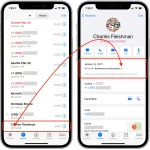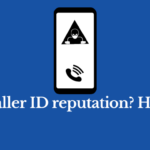Voice over Internet Protocol (VoIP) is a technology that allows you to make and receive phone calls over the internet, instead of using traditional phone lines. VoIP offers many benefits, such as lower costs, higher quality, and more flexibility. However, VoIP also comes with some challenges, especially when it comes to caller ID.
Caller ID is a feature that displays the name and number of the person who is calling you, or the person you are calling. Caller ID is important for many reasons, such as identifying who is calling, avoiding unwanted calls, and building trust and credibility with your customers and clients. In the VoIP landscape, caller ID is not as straightforward as it is with traditional phone systems. In this article, we will explain how caller ID works with VoIP calls, what are the common issues and challenges, and how to manage your caller ID effectively and compliantly.
Understanding VoIP Caller ID
Caller ID works differently with VoIP calls than with traditional phone calls. With traditional phone calls, the caller ID information is transmitted through the phone network, and the phone company verifies and displays the information on your phone. With VoIP calls, the caller ID information is transmitted through the internet, and the VoIP provider or the device you are using determines what information to display on your phone.
This means that VoIP caller ID is more flexible and customizable than traditional caller ID. You can choose what name and number to display when you make a VoIP call, and you can change it anytime. You can also use different caller ID information for different purposes, such as personal and business calls. However, this also means that VoIP caller ID is more prone to errors and manipulation than traditional caller ID. You may encounter issues such as incorrect name display, number misrepresentation, or spoofing.

Challenges with VoIP Caller ID
One of the common issues with VoIP caller ID is that the name displayed may not match the number or the person who is calling. This can happen because of several reasons, such as:
- The VoIP provider does not have access to the name database of the phone network, and only displays the number or a generic name, such as “VoIP Caller” or “Unknown”.
- The VoIP provider does not update the name database frequently, and displays outdated or inaccurate information.
- The VoIP provider does not support name display for international calls, and only displays the number or the country code.
- The VoIP user does not set up or update their caller ID information correctly, and displays a default or incorrect name.
Another common issue with VoIP caller ID is that the number displayed may not be the actual number or the location of the person who is calling. This can happen because of several reasons, such as:
- The VoIP user can choose any number to display, regardless of whether they own it or not, and can change it anytime. This can be useful for legitimate purposes, such as displaying a local number when calling a different area, or displaying a toll-free number when calling a customer. However, this can also be abused for illegitimate purposes, such as displaying a fake or spoofed number to trick or harass someone.
- The VoIP user can use a virtual number, which is a number that is not tied to a physical location or a phone line, but to an internet connection or a device. This can be useful for legitimate purposes, such as having a number in a different country or area, or having multiple numbers for different purposes. However, this can also make it difficult to trace or identify the caller, or to verify their location.
Best Practices for VoIP Caller ID Management
To avoid or resolve the issues and challenges with VoIP caller ID, you need to manage your caller ID effectively. Here are some tips and best practices for VoIP caller ID management:
- Set up and update your caller ID information correctly and regularly. Make sure that the name and number you display match your identity and purpose, and that they are accurate and consistent. You can use your VoIP provider’s online portal or app, or your VoIP device’s settings, to set up and update your caller ID information.
- Choose a reputable and reliable VoIP provider that supports and verifies caller ID information. Look for a VoIP provider that has access to the name database of the phone network, that updates the name database frequently, and that supports name display for international calls. You can also look for a VoIP provider that offers caller ID verification services, such as STIR/SHAKEN, which is a protocol that authenticates and validates caller ID information to prevent spoofing.
- Use different caller ID information for different purposes, but do not abuse or misuse it. You can use different caller ID information for personal and business calls, or for different types of customers or clients. However, you should not use caller ID information that is false, misleading, or deceptive, or that violates the privacy or rights of others. You should also not use caller ID information that is not authorized or consented by the owner or the user of the number.
VoIP Caller ID and Compliance
Besides managing your caller ID effectively, you also need to comply with the laws and regulations that govern caller ID and VoIP. One of the main laws that you need to be aware of is the Truth in Caller ID Act, which is a federal law that prohibits anyone from transmitting misleading or inaccurate caller ID information with the intent to defraud, cause harm, or wrongfully obtain anything of value. The law applies to both domestic and international calls, and to both traditional and VoIP calls. The law also empowers the Federal Communications Commission (FCC) to enforce the law and impose penalties for violations.
The Truth in Caller ID Act does not prohibit you from using different or virtual numbers for legitimate purposes, as long as you do not intend to deceive or harm anyone. However, you need to be careful and responsible when using different or virtual numbers, and make sure that you do not violate the law or the rights of others. You also need to be aware of other laws and regulations that may apply to your caller ID and VoIP practices, such as state laws, industry standards, or contractual obligations.
Caller ID is an important feature that can enhance your VoIP experience and performance. However, caller ID also comes with some challenges and responsibilities that you need to address and fulfill. By understanding how caller ID works with VoIP calls, what are the common issues and challenges, and how to manage your caller ID effectively and compliantly, you can master caller ID presentation in the digital age and enjoy the benefits of VoIP technology.



